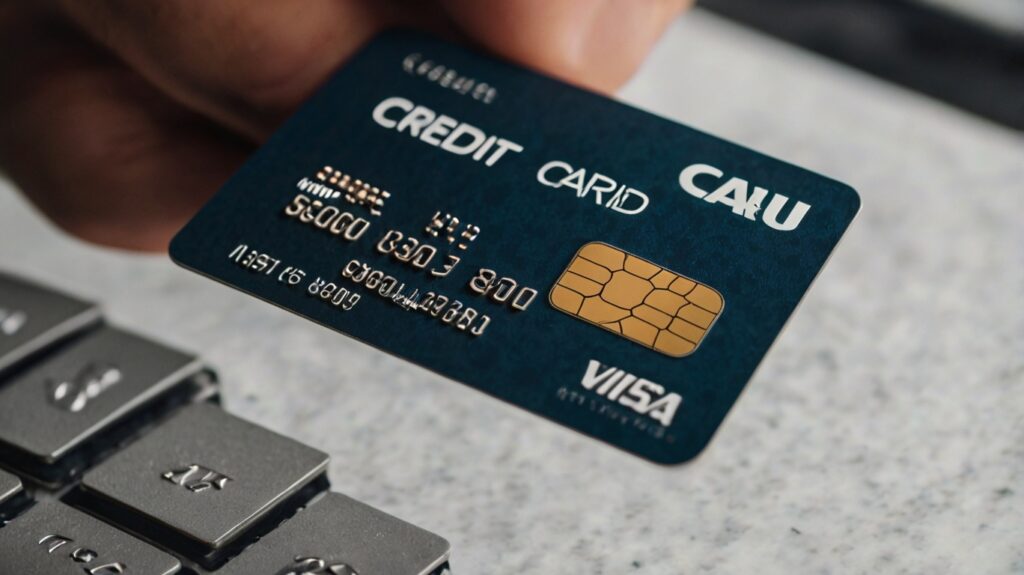By Mia Murray May 29, 2025

For businesses that rely on recurring payments such as SaaS platforms, subscription boxes, streaming services, and gyms, card declines can be a huge pain. More often than not, declines occur when a customer’s credit card has expired, been replaced or reissued after a fraud incident. This results in payment defaults, service disruption, and non-stop churn.
This is where a Credit Card Account Updater (CAU) comes in. This feature will refresh your stored customer card information automatically so you can keep recurring billing. With CAU, retailers don’t have to depend on customers to manually update information, a method that can be slow and lead to missed payments.
Visa, Mastercard, Discover and American Express all have their own updater systems. These services work with your processor to verify and update the cards on file.
In this post, we’ll explain how CAU functions and its primary benefits, and explain how you can use it to simplify your billing and reduce payment friction.
Understanding the Credit Card Account Updater (CAU)
A Credit Card Account Updater (CAU) is an automated solution to help keep your card-on-file details up-to-date. It is particularly helpful for companies with subscription or recurring billing, where stale card data can mean a halt in ongoing services and lost revenue for you.
Instead of hoping customers click through and type new payment details, CAU proactively looks to see if a cardholder’s data changes (for instance an expiration date, new card issued and/or account number change), and then that information is updated in your system.
Card networks offer their own versions of this service:
- Visa Account Updater (VAU)
- Mastercard Automatic Billing Updater (ABU)
- American Express Cardrefresher
- Discover Network Account Updater
These processes operate on a batch basis (meaning updates are made on a schedule, such as weekly or monthly) or in real time, depending on the payment processor and integration.
Check this on how to choose the best payment processing solution for your business.
By refreshing card data, CAU minimizes missed payments and spares customer service teams from preventable problems.
How Credit Card Account Updater Works?
Here, in simple terms, is how a Credit Card Account Updater works:
- You upload your card-on-file to your payment gateway or processor on a regular basis.
- The processor talks to the card networks’ update services (Visa, Mastercard, etc.).
- The issuing banks check this data to see if any details of the card with the customer has changed.
- If there are updates, like a new expiry date or a new card number, they send this information back to your system.
- Your gateway or billing platform will then replace your old card info with the new credentials.
This is automatic and your customer don’t need to do anything. Most CAU services run in the background, communicating with platforms such as Stripe, Authorize. Net, Braintree or other payment CRMs with no breakages in payment frequency.
Why Businesses Need Credit Card Account Updater?
Outdated card information is a major challenge for businesses that rely on recurring payments. When a card expires, is replaced after loss or theft, or is reissued due to fraud, the billing system fails to process the payment. This leads to declined transactions that affect cash flow and disrupt the customer experience.
As a result, companies are subject to involuntary churn — customers who’ve no plan to leave but are lost nonetheless, due to payments that go wrong. These customers might not come back, even if the problem was minor. Moreover, failed billing attempts can be a reason for high chargebacks, particularly when clients are taken by surprise when retry is being made.

Operationally speaking, failed payments like these are expensive to handle. Your team is wasting precious time chasing customers through emails or calls to collect up-to-date payment information. This adds to operational overhead and takes the focus off your team for growth-related tasks.
Without a tool such as CAU, companies lose money, damage retention, and waste time on manual follow-up.
Benefits of Using Credit Card Account Updater
There are many benefits for businesses with recurring billing models to integrate a Credit Card Account Updater.
First, it eliminates involuntary churn by automatically updating outdated or replaced card data. This means your customers never miss any service and you don’t lose revenues due to declined payments.
Then, it greatly enhances the rate of payment success. Billing systems that have current card data will help ensure that your transactions are most apt to complete on the first try, allowing for better monthly revenue predictability.
It’s also good for customers. Customers don’t have to manually update their card info—CAU does it behind the scenes, making billing feel effortless and invisible.
Another great advantage is less manual work for your billing or customer service department. No more chasing down customers with emails, calls, or support tickets over failed payments from expired cards.
Finally, CAU ensures high revenue stability for your business, which can be particularly advantageous for subscription models. More predictability and less noise in your billing cycle You forecast more accurately and grow with confidence.
Who Uses a Credit Card Account Updater?
CAU is essential for any industry that uses card-on-file billing and operates on recurring payment models. It’s especially valuable in sectors where service continuity is key.
Here are some of the industries involved:

- SaaS firms, where monthly or yearly subscriptions are the standard
- Businesses that rely on steady, monthly payments are facing tough times.
- Fitness centers and health clubs with auto-renewing contracts
- Video or music services on streaming platforms
- Online membership website for education, coaching or community
- Digital publications with paid-for content or readers on a recurring subscription basis
In both of these cases, CAU guarantees payments go through without a hiccup, even if the customer neglects to update their billing information.
Merchant Types Supported
Credit Card Account Updater is compatible with many merchant profiles. Whether you are a low-risk business like a software company or a high-risk merchant like an online coaching platform or CBD subscription, CAU can be used with the appropriate payment processor.
Whether you’re a single-store retailer or a large corporation, if you store card details you can only gain from automated updates. If you work with card-on-file billing and you’d like to keep your payments going, CAU is a great addition to your payment stack.
Setting Up a Credit Card Account Updater for Your Business
Setting up a Credit Card Account Updater is a straightforward process when done through a supported payment processor. Here’s how to implement it in your billing flow:
1. Choose a CAU-compatible payment processor.
Not all processors offer this feature, so look for providers that integrate with Visa Account Updater (VAU) and Mastercard Automatic Billing Updater (ABU). Processors like Authorize.Net, Stripe, and PaymentCloud often support CAU natively or through add-ons.
2. Activate CAU in your merchant dashboard.
Once your account is live, navigate to your dashboard settings. Enable the CAU feature—this may require you to opt-in through a service agreement or support request.
3. Choose how often and when you want to update.
You can choose how frequently to submit your card-on-file information. The monthly batch updates are the most popular. There are a few gateways that are capable of pulling in real-time information for immediate card data sync.
4. Monitor update reports and decline rates.
You will find in your dashboard the success rates for CAU reports performed and cards that couldn’t be updated. Use this to evaluate billing health and then follow-up.
With all these processes set up, you’re minimizing declines and keeping your billing cycle on autopilot.
Integration with Payment Gateways
Most modern payment gateways support CAU either directly or via partnerships with processors. Here’s how some of the most popular ones handle it:

- Authorize.Net offers built-in support for VAU and ABU. Merchants can enable CAU through their account settings or contact support for activation.
- Stripe doesn’t use the term “CAU” explicitly but manages card updates automatically through its direct integrations with card networks. Updates happen in the background.
- Braintree supports automatic billing updates for Visa, Mastercard, and Discover. Merchants can monitor update attempts and results via the control panel.
- Adyen offers seamless card updates as part of its recurring billing toolkit. The feature is managed server-side, requiring no manual configuration for most merchants.
These gateways handle the CAU for you in the background, so won’t have to mess with complicated integrations. By turning on the feature, access to the latest payment information gets guaranteed. It is advisable to check with your provider and check this feature.
Key Metrics to Track With CAU
To monitor how well your Credit Card Account Updater is working, keep these metrics top of mind:

- Card Update Success Rate: Percentage of expired/changed cards successfully updated using CAU. A high submission rate is a sign of a good data hygiene and can also lead to less payments interruptions.
- Decline Rate Reduction: Watch as your payment decline rate drops after CAU is in place. The lower the churn, the more successful your recurring transactions.
- Churn Reduction Percent: Monitor the extent to which CAU drives down involuntary churn (customers who churn because of failed payments).
- Revenue Retention Gain: Determine the difference between Recurring Revenue Retained after the deployment of CAU. This is a metric that very closely ties to the impact on the business of having billing interruptions.
These KPIs measure if CAU is increasing billing stability and customer retention.
Conclusion
The Credit Card Account Updater (CAU) is a must-have tool for any business relying on recurring billing or subscription models. It eliminates friction caused by expired or changed card details, ensuring payments go through without interruption.
By automatically updating card credentials, CAU improves billing continuity, enhances the customer experience, and reduces the risk of churn. For businesses, this means fewer failed transactions, less manual intervention, and stronger cash flow reliability.
The return on investment is clear: better retention, more consistent revenue, and fewer support headaches. To fully benefit, partner with a payment processor or gateway that offers CAU support and integrates it seamlessly into your billing system.
Investing in CAU is a smart move that pays off in customer satisfaction and financial stability.
Frequently Asked Questions
1. Is CAU available for debit cards as well?
Yes, CAU supports both credit and debit cards, as long as the issuing bank participates in updater programs like Visa Account Updater (VAU) or Mastercard ABU. This helps ensure smooth billing even when debit card details change.
2. How often does CAU update card information?
Updates are typically processed once a month in batch format. However, some gateways support real-time updates for faster, more seamless billing continuity.
3. Can customers opt out of CAU?
Yes, customers can contact their issuing bank to opt out of automatic account updater services. This allows users to maintain more control over their recurring billing preferences.
4. Is CAU safe and PCI-compliant?
CAU follows strict PCI DSS standards and data encryption protocols. It ensures secure transfer and storage of updated card information between issuers and processors.
5. Which payment gateways offer built-in CAU support?
Popular gateways like Authorize.Net, Stripe, Braintree, and Adyen offer native CAU integration. They automatically manage updates to reduce payment failures and improve retention.
Leave a Reply